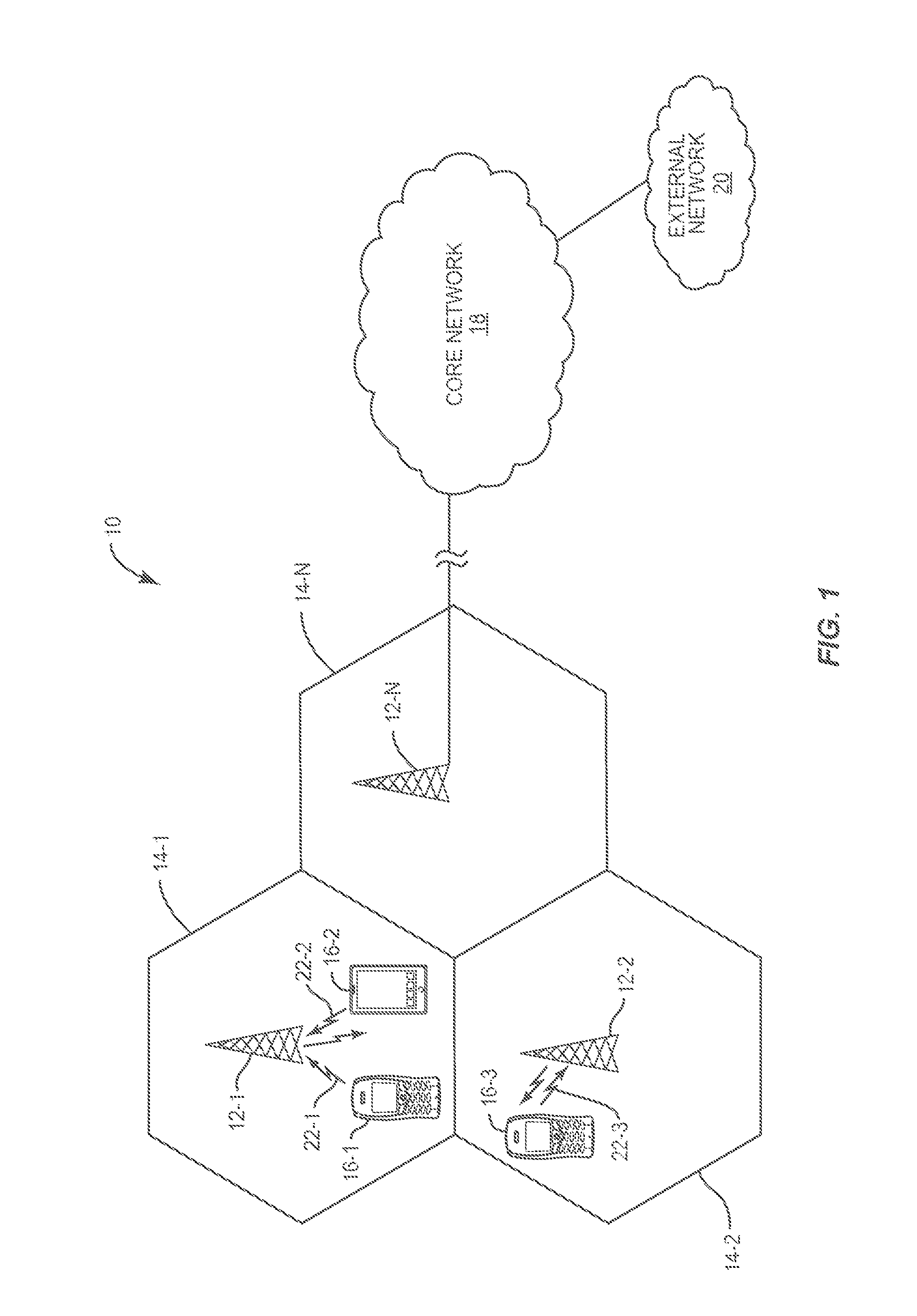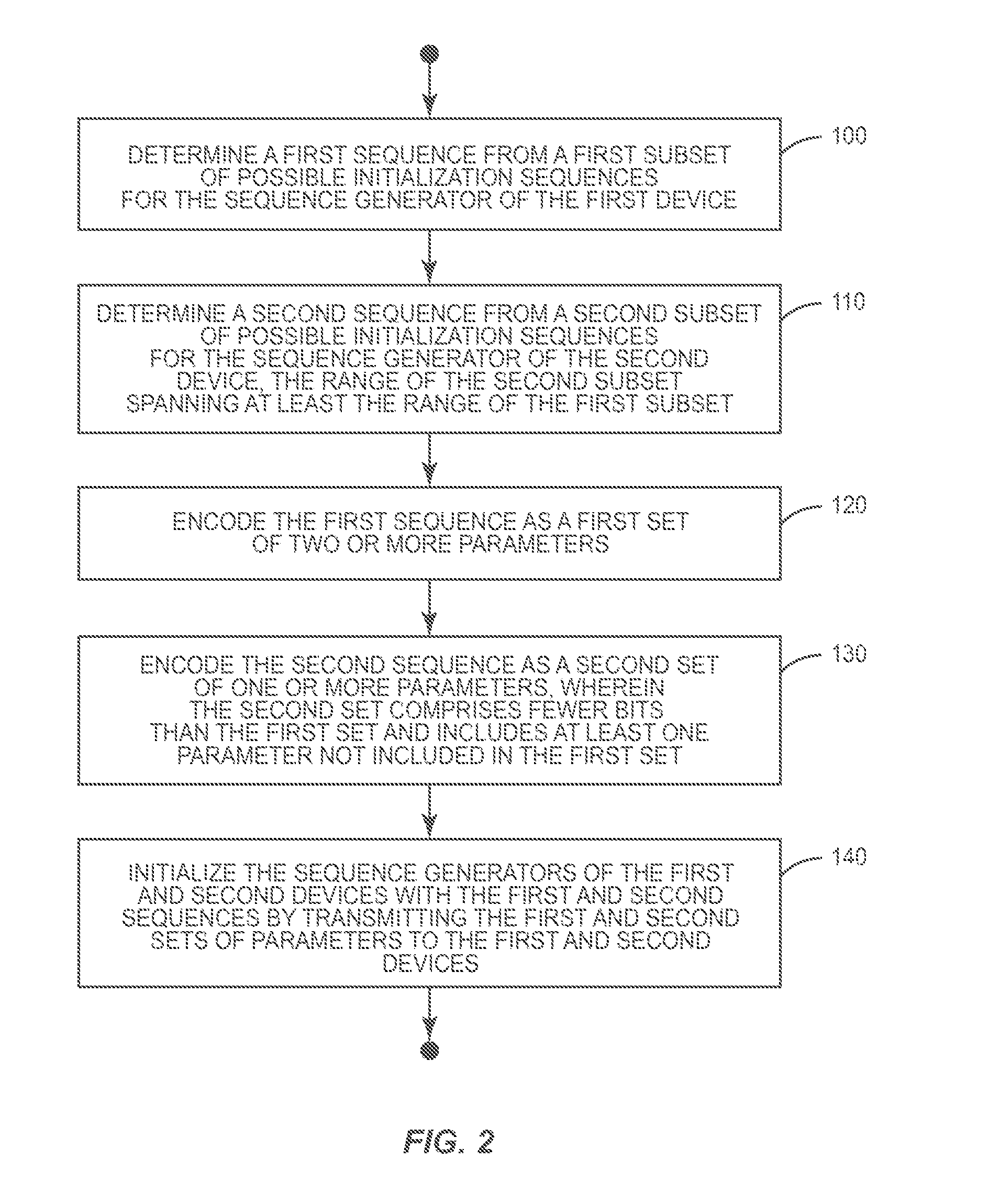Signaling of sequence generator initialization parameters for uplink reference signal generation
a sequence generator and initialization parameter technology, applied in the field of initialization of pseudorandom sequence generators, can solve the problems of orthogonality loss, rss from different ues within the same cell potentially interfering with each other, and the initialization sequence of the sequence to the wireless device presents challenges in terms of signaling overhead, so as to reduce the control signaling
- Summary
- Abstract
- Description
- Claims
- Application Information
AI Technical Summary
Benefits of technology
Problems solved by technology
Method used
Image
Examples
Embodiment Construction
[0036]FIG. 1 depicts a wireless communication system 10 according to one or more embodiments. The system 10 includes a radio access network (RAN) that comprises a plurality of geographically distributed base stations 12-1, 12-2, . . . 12-N. The base stations 12-1, 12-2, . . . 12-N (referred to collectively as base stations 12) provide wireless communication coverage to wireless devices 16-1, 16-2, . . . 16-M within respective areas referred to as cells 14-1, 14-2, . . . 14-N. Through the base stations 12, the wireless devices 16 access a core network 18, which in turn connects the devices 16 to one or more external networks 20, e.g., the Internet.
[0037]The wireless devices 16 transmit respective uplink reference signals 22 to the base stations 12. The base stations 12 employ the uplink reference signals for various reasons, such as to estimate the respective wireless channels between the base stations 12 and the devices 16. The uplink reference signals may comprise, for instance, de...
PUM
 Login to View More
Login to View More Abstract
Description
Claims
Application Information
 Login to View More
Login to View More - R&D
- Intellectual Property
- Life Sciences
- Materials
- Tech Scout
- Unparalleled Data Quality
- Higher Quality Content
- 60% Fewer Hallucinations
Browse by: Latest US Patents, China's latest patents, Technical Efficacy Thesaurus, Application Domain, Technology Topic, Popular Technical Reports.
© 2025 PatSnap. All rights reserved.Legal|Privacy policy|Modern Slavery Act Transparency Statement|Sitemap|About US| Contact US: help@patsnap.com



